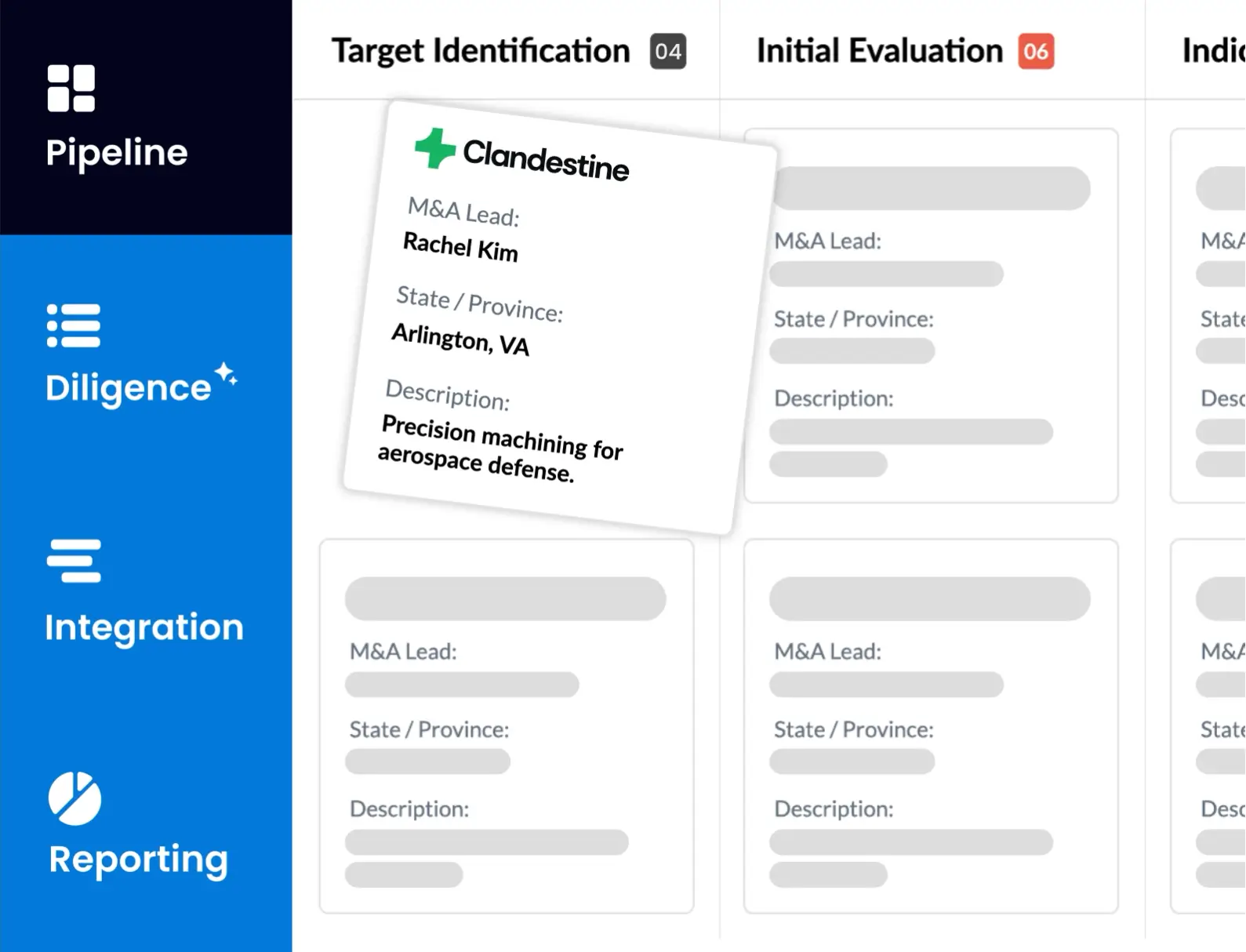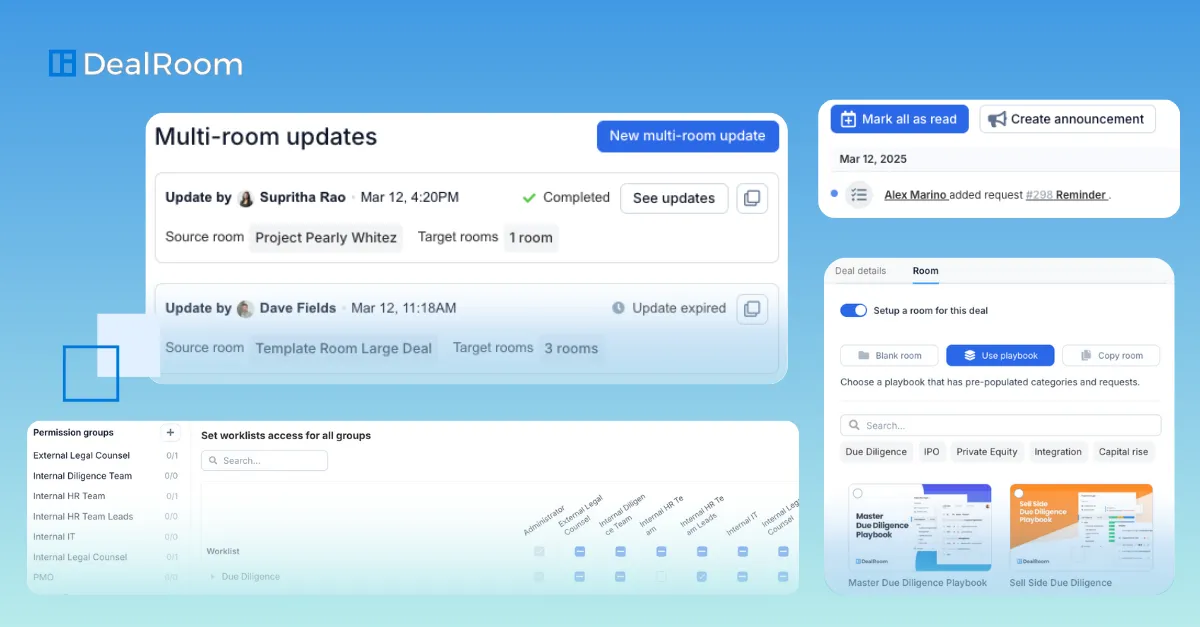Mergers and acquisitions (M&A) are complex processes that involve not just financial, operational, and strategic considerations but also significant cultural shifts. The success of these endeavors often hinges on the effective integration of the distinct organizational cultures involved.
Cultural integration refers to the blending of the unique values, beliefs, and practices of each company, which can either facilitate or hinder collaboration and long-term success. In this article, we explore the crucial role of cultural integration in M&A, highlight common challenges, and provide strategies and best practices to ensure a smooth and effective integration process.
In this article:
What is Cultural Integration?
Organizational culture, or corporate culture, encompasses the shared values, beliefs, and practices of an organization. It influences employee behavior, decision-making processes, and overall company dynamics.
Cultural integration is the process of blending the distinct organizational cultures of two or more companies during a merger or acquisition. Companies bring their unique values, beliefs, traditions, and workplace norms, and these distinct cultures can either facilitate or hinder collaboration and integration. Effectively managing cultural integration is crucial to achieving the overarching goals of the merger or acquisition and realizing synergies.
The Role of Cultural Integration in M&A
Culture plays a crucial role in the success of M&A because it influences how employees from different organizations work together, communicate, and align with the new business objectives. Here are several key ways culture impacts M&A:
Employee retention and morale
M&A can create uncertainty and fear among employees. A smooth cultural integration process can alleviate these concerns, leading to higher retention and minimizing disruption.
Operational efficiency
When organizational cultures align, it fosters better collaboration and communication among team members, ultimately enhancing operational efficiency.
Innovation and synergy
A well-integrated culture can stimulate innovation by combining diverse perspectives and ideas. This synergy can lead to new products, services, and ways of working that can benefit the newly formed organization.
Performance outcomes
Organizations that prioritize cultural integration often see improved performance outcomes. When employees feel aligned and engaged, they’re bigger contributors to the company’s success.
Challenges Posed by Cultural Differences in M&A

Cultural integration in M&A comes with a unique set of challenges. To blend distinct cultures effectively, companies must understand these complexities and how to navigate them.
Diverse value systems
Organizations involved in M&A often originate from different industries and cultures, which can lead to a clash of values. Each company may have a unique mission, vision, and set of beliefs that shape its work environment. Merging these differing value systems can create confusion and conflict among employees, complicating the integration process.
Leadership styles
Leaders from the merging organizations may have different management styles and approaches to decision-making. These discrepancies can lead to friction at the leadership level, which can trickle down to employees and hinder the establishment of a cohesive organizational culture. Aligning leadership styles requires open dialogue and a willingness to adapt to a shared vision.
Communication
Effective communication is critical during the integration process. However, gaps often arise due to insufficient clarity and transparency regarding changes and expectations. Employees from both organizations may feel uninformed, leading to misunderstandings. A lack of communication can exacerbate fears and uncertainties, resulting in decreased morale and productivity.
Resistance to change
Employees may feel a sense of attachment to their existing organizational culture and be resistant to change. This can lead to skepticism towards new policies, unwillingness to adopt new practices, or even employee turnover. Overcoming this resistance requires strong leadership and change management strategies to engage employees and foster buy-in for the new cultural framework.
Integrating policies and practices
In addition to the cultural aspects, merging organizations need to harmonize policies, procedures, and systems. This requires negotiating and reconciling differences in practices related to human resources, compliance, and operational processes, which can be complicated and time-consuming. Policy disparities can lead to confusion and frustration among employees, impeding the integration process.
Brand and customer experience
Merging companies may have different ways of representing their brand to customers. If the internal culture clashes, this can result in an inconsistent customer experience, damaging the brand's reputation. Aligning cultures ensures a unified approach to customer relations, marketing, and service delivery.
Strategies & Best Practices for Successful Cultural Integration
To pave the way for successful cultural integration in M&A, consider the following strategies and best practices.
Assess Cultural Differences
Thoroughly assessing each organization's culture before the merger can help identify similarities and potential areas of conflict. This evaluation informs a tailored transition plan that addresses the distinct cultural elements at play. Here are a few strategies and considerations for evaluating cultural differences:
- Use surveys, questionnaires, interviews, focus groups, and observation to assess the existing cultures within each company.
- Consider each organization’s leadership approach. Are they autocratic or democratic? How do leaders interact with employees?
- Compare how decisions are made in both organizations, including how each company encourages collaboration and input from employees.
- Identify whether communication tends to be formal (top-down) or informal (collaborative). This can affect how information is shared during and after the integration process.
- Investigate how conflicts are typically resolved in each organization, whether through open discussion or avoidance.
- Evaluate how each company gives and receives feedback. Are employees encouraged to express their opinions, or is there a more traditional hierarchy?
- Investigate how teams function within each organization. Are they collaborative or competitive?
- Assess the organizational attitude towards innovation. Are employees encouraged to take risks and be creative, or is there a focus on following established procedures?
- Look at other organizations within the same industry that have undergone similar M&A activities to identify common cultural challenges and best practices.
Engage Employees Early
Solicit employee feedback and encourage participation to enhance buy-in and address any concerns proactively. Organizing open forums and workshops provides employees an opportunity to share their thoughts and concerns. Management can then address specific points employees raise, demonstrating a commitment to inclusivity and transparency.
Creating cross-functional teams comprising members from both organizations can help bridge cultural divides. These teams can work on specific integration projects, such as creating a unified onboarding and training program or harmonizing employee benefits and human resources policies, allowing employees to collaborate and share perspectives. This promotes understanding and cooperation while fostering relationships that lead to a more cohesive organizational culture post-merger.
Maintain Transparent Communication

Open dialogue not only keeps employees informed but also helps build trust and mitigate misunderstandings. Implementing a schedule for regular updates can help keep employees in the loop regarding the progress of the integration.
This may include weekly newsletters, email blasts, or dedicated intranet pages where employees can access the latest information. Regular updates provide clarity around ongoing changes and reassure employees that their leaders are actively managing the transition.
Create a Unified Vision
Establishing a unified vision that reflects the core values of both organizations can serve as a guiding principle during integration, inspiring employees and promoting a collective identity. Involving employees from both organizations in the vision-creation process fosters inclusivity and buy-in.
Conduct workshops or focus groups to gather input from a diverse range of stakeholders. Organizations can leverage shared values and collective strengths. Leaders can also address concerns while paving the way for a more united culture. Leaders must not only articulate the new vision but also demonstrate their commitment to it through their actions and decisions.
Offer Training and Support Programs
Offer customized training workshops that address the unique challenges and opportunities presented by the merger or integration. These workshops can focus on various skills aligned with the new organizational culture, such as:
- Cross-cultural communication
- Change management
- Conflict resolution
Establishing mentorship programs and pairing employees from different backgrounds or organizational entities encourages knowledge sharing, relationship building, and a deeper understanding of the new culture. Mentors can provide guidance, support, and insights into best practices, enabling mentees to adapt and thrive within the evolving organizational landscape.
Provide accessible resources such as online portals, guides, and FAQs. These resources can serve as a comprehensive knowledge base, ensuring that employees can easily access information regarding the new organizational values, policies, and procedures.
Measure the Success of Cultural Integration

Measuring the success of cultural integration is essential to ensure that both organizations are moving toward a unified, productive culture. Success metrics provide leaders with clear insights into whether integration efforts are working and where adjustments are needed.DealRoom’s Synergy Tracker is a powerful tool for measuring the success of cultural integration. It’s a comprehensive solution that allows organizations to:
- Track cultural synergies
- Measure employee sentiment
- Monitor key integration milestones
- Identify potential issues early
- Improve communication and transparency
Frequently Asked Questions

What is an example of failed cultural integration in M&A?
In 1998, German automaker Daimler-Benz merged with American company Chrysler to form DaimlerChrysler. Despite the strategic and financial rationale, the merger faced significant challenges due to cultural differences.
Daimler-Benz's hierarchical and formal corporate culture clashed with Chrysler's more informal and risk-taking environment. This misalignment led to management conflicts, employee dissatisfaction, and ultimately, the dissolution of the merger in 2007.
What are three examples of cultural differences in the workplace?
Cultural differences can include:
Communication styles
Direct vs. indirect communication, where some cultures prioritize bluntness, and others value subtlety.
Attitudes towards hierarchy
Some cultures have a strong respect for authority and formality, while others have a more egalitarian approach.
Approach to time management
Some workplaces prioritize punctuality, while others may have a more flexible approach to time management and working hours.
Do cultural differences matter in mergers and acquisitions?
Yes, cultural differences have a significant impact on mergers and acquisitions. Misalignment between organizational cultures can lead to misunderstandings, lower employee morale, and difficulties in collaboration, which can hinder the integration process.
How to overcome cultural differences in mergers and acquisitions?
To overcome cultural differences in M&A, it’s important to conduct thorough cultural assessments, foster open communication, provide cross-cultural training, and create a joint vision that incorporates the best elements of both cultures. Involving employees in the integration process helps ease the transition and promotes buy-in.
What is the best way to manage cultural differences in a workplace?
The best way to manage cultural differences in the workplace is to foster an inclusive environment where diversity is valued. Encouraging open dialogue, providing diversity training, ensuring that policies are inclusive, and creating an atmosphere where all employees feel respected and understood help to achieve these goals.
Final Thoughts
Aligning organizational cultures enables businesses to foster a unified, collaborative, and innovative environment, which is key to unlocking the full potential of a merger or acquisition. However, the complexity of blending different cultures requires careful planning, transparent communication, and active employee involvement.
DealRoom’s M&A Platform offers robust capabilities to help companies manage cultural integration and other aspects of post-merger integration. For example, DealRoom’s Synergy Tracker aids in monitoring and measuring cultural integration efforts, including tracking cultural synergies, gauging employee sentiment, and identifying potential issues early on. Request a demo today to learn how DealRoom can help you stay on top of the integration process and make data-driven decisions.



.webp)















.jpg)



.webp)
.webp)
.webp)






.png)
.png)
.png)
.svg)

.svg)
.png)

